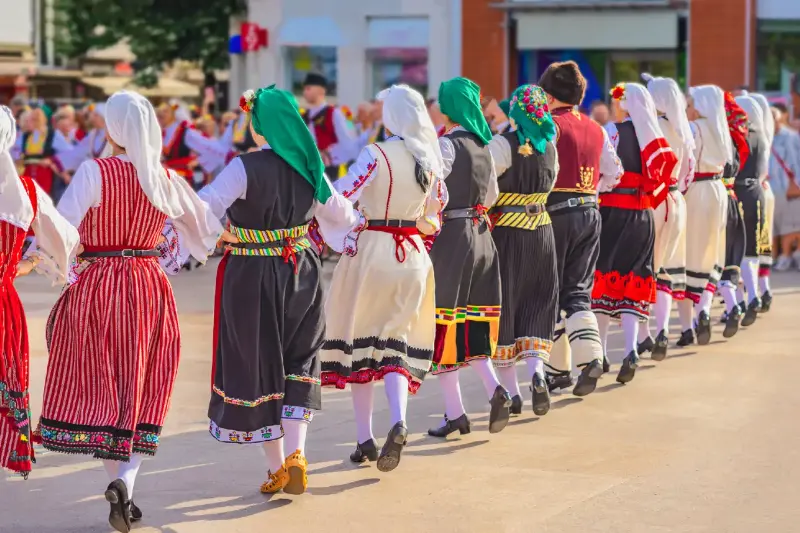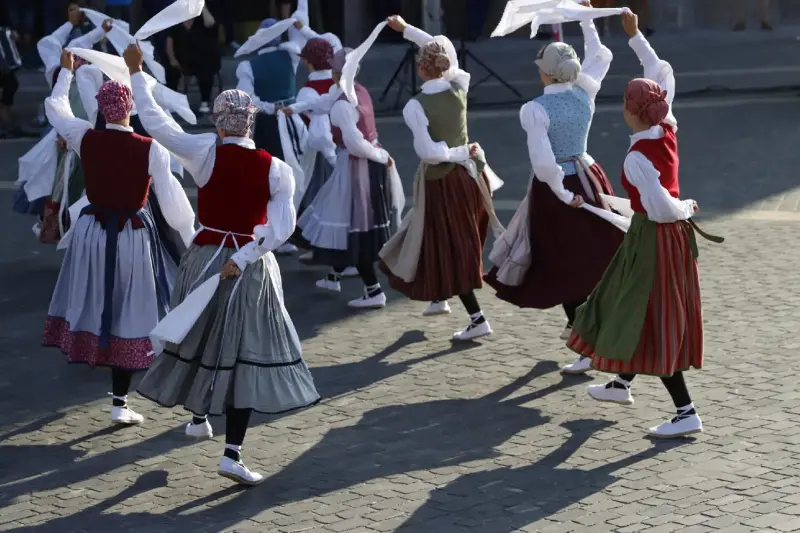Folk Dance as a Cultural Identity: How Tradition Moves the Body and Soul

Every nation is a tapestry of traditions—stitched together by stories, sounds, and, perhaps most vividly, by movement. Folk dance pulses at the heart of this tapestry, giving physical form to cultural memory and identity. From the exuberant leaps of Ireland's céilí to the stately steps of Japan's Bon Odori, folk dance isn’t merely entertainment; it is an embodied history, a language with rhythms and gestures that tell who we are.
The Secret Language of Steps: Beyond Performance
Why do communities return, year after year, to the same swirling patterns and melodic tunes? The answer lies deeper than nostalgia. Folk dances are codes—every sway, stomp, and spin communicates: from the flirtatious flick of a Spanish sevillana fan, to the military precision of Ukrainian hopak. Dancers transmit stories of courtship, harvests, victories, and even protests, all passed down through muscles and memory.
- In India’s Bhangra, energetic jumps celebrated farmers’ successful harvests.
- The Greek Kalamatianos weaves circles symbolising unity and eternity.
- Scottish Highland dances originally trained warriors in agility and strength.
Each footfall is more than tradition—it’s testament to survival and adaptation.
A Living Bridge Between Past and Present
Folk dance stands resilient against the erasure of globalisation. It connects the present to ancestral roots and keeps endangered languages, costumes, and customs alive. When you witness a troupe spinning under lantern-flecked skies at a festival in Romania, you’re watching centuries-old rites adapting to modern life.
Consider the following:
- Many folk dances now incorporate modern music and fusion costumes, allowing younger generations to find relevance.
- Festivals like the National Eisteddfod of Wales or Indonesia’s Bali Arts Festival draw thousands each year, blending ancient choreography with new influences.
In movement, cultural identity remains fluid, growing stronger with every generation that takes to the dancefloor.
Healing, Unity, and the Role of Ritual
Folk dance is more than communal entertainment. For many societies, dance rituals invite healing, mark life transitions, and forge solidarity. In Africa’s Yoruba culture, the Bata dance is part of spiritual ceremonies that invoke ancestral spirits. Across the Americas, First Nations powwow dances reaffirm cultural pride and community ties amid histories of displacement.
Through collective rhythm and synchronised steps:
- Dancers release stress, express emotions and foster group cohesion.
- Songs and costumes invoke shared memories, anchoring individuals in their heritage.
- Audiences become participants, clapping, singing, or joining informal circles.
There’s an unspoken promise when the first drumbeat sounds: here, you are welcome, you belong, you remember.

Surprising Facts That Make Folk Dance Unforgettable
Did you know?
- The world’s longest folk dance chain, the Serbian Kolo, once wound over 10 kilometres with thousands of dancers.
- In China’s Dragon Dance, each dancer manipulates a single section of the magnificent serpent—requiring seamless teamwork.
- Scientists found that synchronised group dancing releases endorphins and even enhances trust between participants.
Science and tradition agree: dancing together bonds us in ways words alone cannot.
As the lights dim and the last dancer bows, we’re reminded that folk dance doesn’t just move bodies—it stirs the soul and binds communities. What ancient rhythms might your own steps echo if you joined the circle? Perhaps in embracing the movements of those before us, we discover the most enduring truths about ourselves.
